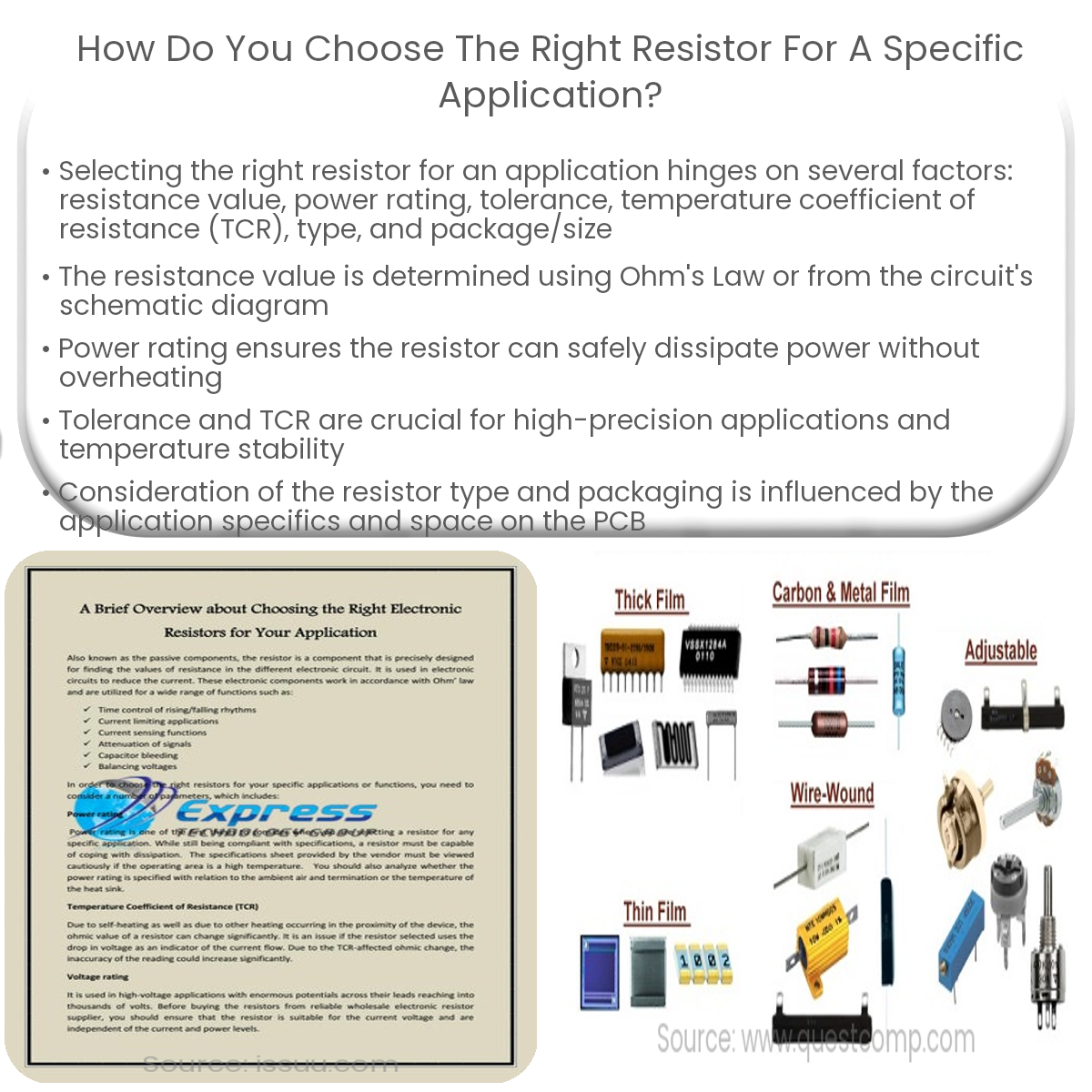Consider resistance value, power rating, tolerance, temperature coefficient, resistor type, and package size to choose the right resistor for your application.
Choosing the Right Resistor for a Specific Application
Selecting the right resistor for an application is crucial to ensure the proper functioning of an electronic circuit. This article will outline the key factors to consider when choosing a resistor for a specific application.
1. Resistance Value
The first step in selecting a resistor is to determine the required resistance value, which can be calculated using Ohm’s Law (V = I x R) or by referring to the circuit’s schematic diagram. Be sure to choose a resistor with a value that meets the design requirements.
2. Power Rating
Resistors have a power rating that indicates the maximum amount of power they can safely dissipate without overheating or failing. To find the appropriate power rating, calculate the power dissipation (P = I2 x R) and choose a resistor with a rating higher than the calculated value.
3. Tolerance
Resistor tolerance refers to the acceptable range of deviation from the specified resistance value. Tolerance is expressed as a percentage, with lower percentages indicating higher precision. For applications that demand high accuracy, choose resistors with a low tolerance value, such as 1% or 0.1%.
4. Temperature Coefficient of Resistance (TCR)
The TCR is a measure of how a resistor’s value changes with temperature. In applications where temperature stability is critical, select resistors with a low TCR to minimize resistance fluctuations due to temperature changes.
5. Resistor Type
Consider the type of resistor best suited for your application. Common types include:
- Carbon film resistors – inexpensive and suitable for general-purpose applications.
- Metal film resistors – offer better tolerance, stability, and lower noise compared to carbon film resistors.
- Wirewound resistors – suitable for high-power applications and offer excellent temperature stability.
- Precision resistors – ideal for high-accuracy applications requiring tight tolerances and low TCRs.
6. Package and Size
Select the appropriate resistor package and size based on the available space on the printed circuit board (PCB) and the mounting method. Common packages include through-hole, surface-mount, and chip resistors.
By considering these factors, you can choose the right resistor for your specific application, ensuring optimal performance and reliability for your electronic circuit.


